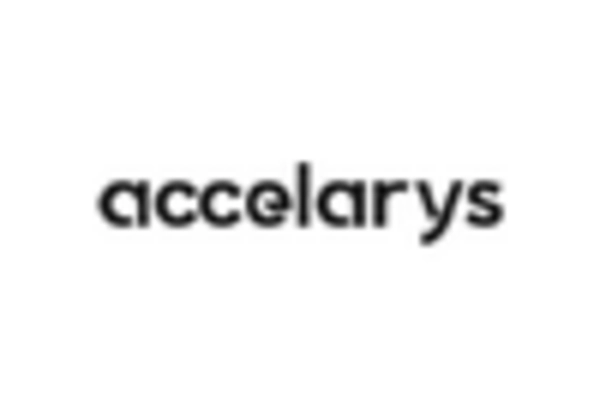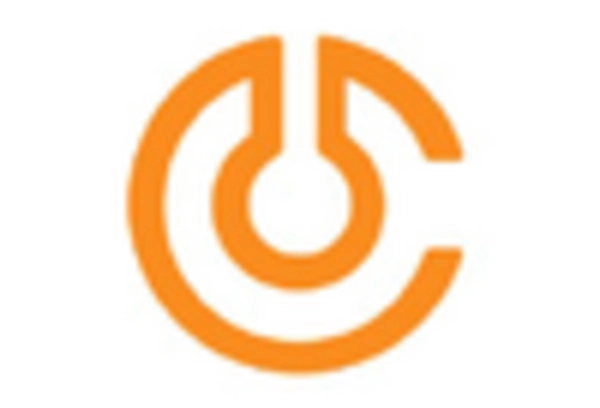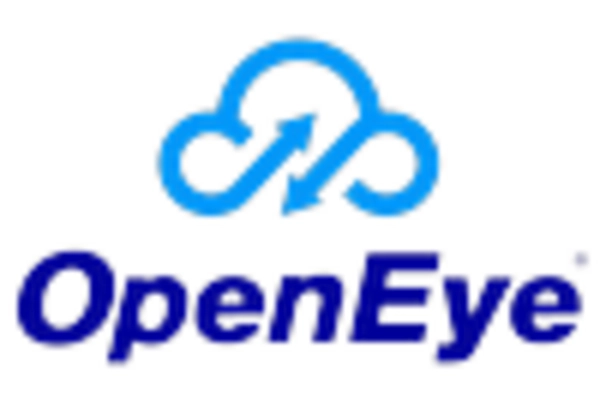The molecular modeling market is currently characterized by a dynamic competitive landscape, driven by advancements in computational technologies and an increasing demand for drug discovery and development. Key players such as Schrodinger (US), Accelrys (US), and OpenEye Scientific Software (US) are at the forefront, leveraging innovative solutions to enhance their market positioning. Schrodinger (US) focuses on integrating artificial intelligence (AI) into its molecular modeling platforms, which appears to significantly improve predictive accuracy in drug design. Meanwhile, Accelrys (US) emphasizes partnerships with academic institutions to foster research and development, thereby enhancing its technological capabilities and expanding its user base. Collectively, these strategies contribute to a competitive environment that is increasingly reliant on technological innovation and collaborative efforts.
In terms of business tactics, companies are increasingly localizing their operations to better serve regional markets and optimize supply chains. The market structure is moderately fragmented, with several players vying for market share, yet the influence of major companies remains substantial. This competitive structure allows for a diverse range of offerings, catering to various segments within the molecular modeling domain, from pharmaceuticals to materials science.
In October 2025, Schrodinger (US) announced a strategic partnership with a leading pharmaceutical company to co-develop AI-driven drug discovery platforms. This collaboration is poised to enhance Schrodinger's capabilities in predictive modeling, potentially leading to faster and more efficient drug development processes. The strategic importance of this partnership lies in its ability to combine resources and expertise, thereby accelerating innovation in the field.
In September 2025, OpenEye Scientific Software (US) launched a new cloud-based platform designed to facilitate collaborative molecular modeling efforts among researchers. This initiative reflects a growing trend towards digital transformation in the industry, enabling real-time data sharing and analysis. The strategic significance of this move is underscored by the increasing need for collaborative tools in research, which can enhance productivity and foster innovation.
In August 2025, Accelrys (US) expanded its product offerings by acquiring a small biotech firm specializing in molecular simulations. This acquisition is likely to bolster Accelrys's portfolio, allowing it to provide more comprehensive solutions to its clients. The strategic importance of this acquisition lies in its potential to enhance Accelrys's technological capabilities and market reach, positioning the company favorably against its competitors.
As of November 2025, current trends in the molecular modeling market include a pronounced shift towards digitalization, sustainability, and the integration of AI technologies. Strategic alliances are increasingly shaping the competitive landscape, as companies recognize the value of collaboration in driving innovation. Looking ahead, it appears that competitive differentiation will evolve from traditional price-based competition to a focus on technological advancements, innovation, and supply chain reliability. This shift suggests that companies that prioritize these areas may gain a competitive edge in the rapidly evolving market.

















Leave a Comment